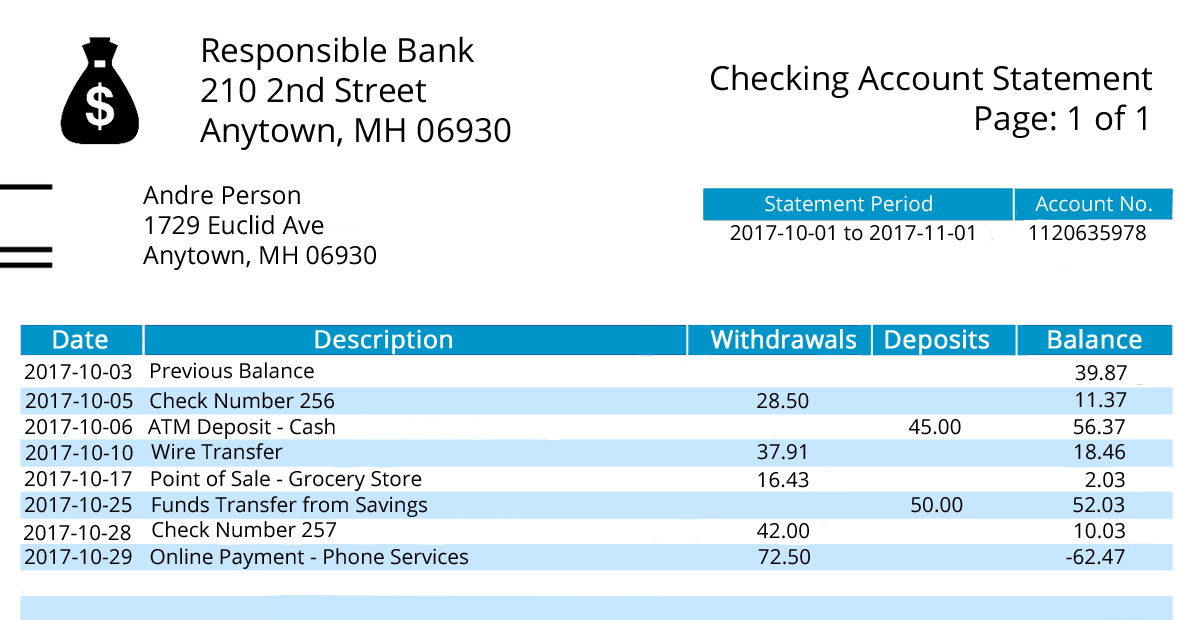Banks use positive numbers to represent money that gets put into an account and negative numbers to represent money that gets taken out of an account. When you put money into an account, it is called a deposit. When you take money out of an account, it is called a withdrawal.
People also use negative numbers to represent debt. If you take out more money from your account than you put in, then you owe the bank money, and your account balance will be a negative number to represent that debt. For example, if you have \$200 in your bank account, and then you write a check for \$300, you will owe the bank \$100 and your account balance will be -\$100.
| |
starting balance |
deposits and withdrawals |
new balance |
| row 1 |
0 |
50 |
$0 + 50$ |
| row 2 |
50 |
150 |
$50 + 150$ |
| row 3 |
200 |
-300 |
$200 + (\text-300)$ |
| row 4 |
-100 |
|
|
In general, you can find a new account balance by adding the value of the deposit or withdrawal to it. You can also tell quickly how much money is needed to repay a debt using the fact that to get to zero from a negative value you need to add its opposite.
